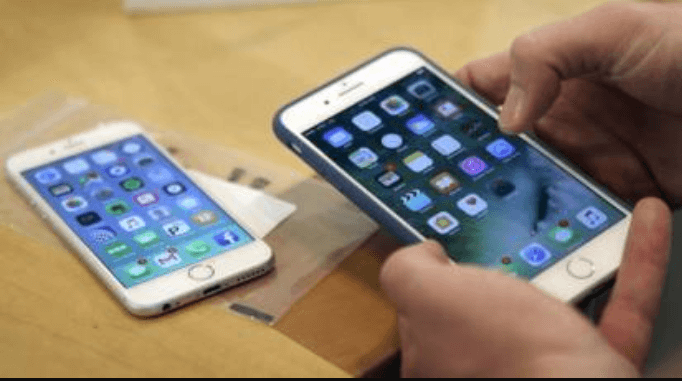How to Run Android Apps on an iPhone Using Emulators
Running Android applications on an iPhone might sound impossible in the beginning, but with the appropriate emulators and test automation tools and emulators, it’s becoming more manageable. It is accessible particularly for QA testers and software developers. Whether you are seeking for testing app compatibility or discover Android-exclusive traits, an Android emulator for iPhone can assist in simulating Android environments on iOS machines. Likewise, if you are working from a macOS machine, employing an Android emulator Mac setup enables you to develop & test Android applications seamlessly within the Apple system. In this article, we will discover whether it is truly feasible to execute Android applications on an iPhone through emulators, and what alternate solutions are obtainable.
Can You Run Android Apps on an iPhone?
Officially, iOS doesn’t natively support such applications. Apple’s arena is strictly controlled for security as well as performance reasons, which makes installing or executing APK files (Android application packages) which is not possible without jailbreaking, a dicey and often unstable route. But with developments in cloud-centric emulators and cross-platform tests, some workarounds have appeared that allow users to mimic Android behavior within an iOS system, mainly for app testing purposes.
What is an Android Emulator for iOS?
It is a software-assisted solution or tool that attempts to replicate the Android OS & its app environment on an iOS machine such as an iPad or iPhone. Its prime purpose is to allow users, particularly app developers and QA engineers to simulate Android functionality within the iOS system, mainly for testing, debugging, or educational usage.
But because of Apple’s strict system restrictions and sandboxing policies, native Android emulators can’t execute directly on iOS machines. Instead, what is commonly referred to as an “Android emulator for iOS” usually comprises:
- Cloud-centric Android emulators: Platforms such as LambdaTest allow you to execute Android virtual machines through a web browser, which can be accessed on an iPhone.
- Remote replication tools: These let users communicate or control Android applications remotely, without native set up on the iOS machine.
So, although full Android emulation on iOS isn’t natively possible, these remote-access or web-based solutions are the closest functional substitutes existing.
See also: WebView Testing with Playwright: Best Practices
Alternatives to Traditional Android Emulators for iPhone
While there is no true, entirely-featured Android emulator for iPhone accessible on the App Store (and likely never will be), there are some workarounds:
1. Cloud-centric Android Emulators
Platforms such as LambdaTest enable software developers to run and test Android applications in virtual environments through the cloud. These are not installed on the iPhone straight but can be accessed through a browser like Safari or any browser. They are particularly beneficial for:
- Performance monitoring
- UI/UX validation
- Cross-platform tests
Although this is not native emulation, it is a practical process for QA teams and software developers demanding Android access on iOS.
Pros:
- No installation needed
- Functions on iOS via Google Chrome or Safari
- Suitable for cross-platform Quality Assurance (QA)
Cons:
- Not for casual application use
- Restricted access to native device traits
2. Web-centric Android Simulators
Some web-assisted tools simulate basic Android application interfaces. These are restricted in functionality and primarily serve demonstration or educational purposes. Samples comprise:
- RunThatApp
- Appetize.io
Such platforms do not offer full machine emulation but are handy for showing Android behavior from an iPhone browser.
Using an Android Emulator on macOS
If running an Android application straight on an iPhone is not viable, you can go for an emulator Mac solution to bridge the gap. Such emulators run on macOS & are ideal for developing, testing, and debugging Android applications. The top choices comprise:
● Bluestacks
More consumer-centric, Bluestacks allows you to run Android applications and games on a Mac effortlessly. It is also beneficial for testing general application behavior.
● Android Studio Emulator
Google’s authorized emulator comes bundled with Android Studio & supports an extensive array of gadgets, OS versions, & configurations.
● Genymotion
A desktop and cloud-based emulator that supports advanced use cases, making it suitable for enterprise-grade tests.
Through using an Android emulator on macOS, software developers can simulate how applications behave on Android without necessitating a physical Android machine, while still working within the Apple hardware system.
Best alternative to an Android emulator for iPhone: LambdaTest
The best alternate to an Android emulator for iPhone is a cloud-based Android emulator like LambdaTest. It is an AI-native test orchestration & implementation cloud-centric platform that enables native apps and mobile web tests on an online device farm of 5000+ machines and OS combinations. It provides online Android emulators to execute and test Android apps at scale. It also enables users to test applications on iPhones using simulators in just a few minutes. This cloud-centric approach bypasses iOS restrictions while still allowing Android features on an iPhone.
- No installation needed.
- Safe, browser-centric access.
- iPads and iPhones are compatible with iOS devices.
Using LambdaTest’s virtual-based cloud device platform, you can test and execute your Android applications on a range of Android emulators online—including on Android emulator Mac setups. This includes emulators from multiple brands like Xiaomi, Samsung, OnePlus, Google, and many more.
Key Features
Robust and adaptable testing environments are critical for the development of modern Android apps. Cloud-centric Android emulators like LambdaTest proffer an extensive suite of traits that empower developers & testers to confirm application performance across gadgets, networks, & geographies. Let us take a glance at a detailed outline of the impactful features:
1. Cross-Version Android OS Tests
Such cloud-based platforms enable QA testers to test apps across various versions of the Android OS, from legacy releases to modern beta builds. This guarantees your app runs consistently for all users, despite their device’s Operating System version.
2. Network Simulation
Simulate multiple network settings like 4G, 3G, 2G, LTE, or uneven connections. This assists software developers assess loading speed, app performance, and UX under actual network situations, allowing proactive optimization for low-bandwidth consumers.
3. Real-World Troubleshooting
Integrated debugging tools enable QA engineers to detect, scrutinize, and resolve errors immediately while conducting tests. This feature considerably minimizes turnaround time in the SDLC by enabling real-time debugging & validation.
4. Geolocation Tests
Test location-centric application features by simulating diverse geographical regions. Whether your application provides region-centric map solutions, content, or localized pricing, this trait confirms accurate behavior across distinct geolocations without VPN use or physical relocation.
5. Responsive Design & Screen Size Tests
Confirm your Android app is entirely responsive across an extensive set of screen resolutions & sizes, counting foldable devices, tablets, & older models. This enables you to validate adaptive User Interface (UI) behavior & find layout problems early.
6. One-Click Bug Logging
Capture & log errors immediately with a single click. This trait reorganizes the feedback loop between software developers and QA engineers by attaching environment details, logs, and screenshots automatically, fast-tracking issue resolution.
7. Detailed Test Reports
Get comprehensive, actionable reports after every test session. These comprise compatibility insights, performance metrics, error logs, video recordings, and screenshots. Such documentation is essential for continuous upgrading & stakeholder reporting.
8. Real-time Device Cloud Access
Beyond emulators, top-tier platforms such as LambdaTest also give access to a real-world devicecloud, allowing testing on real Android hardware. This guarantees your application functions not just in theory but in accurate real-user conditions, removing surprises post-deployment.
Let’s find out how to test Android apps using LambdaTest Android emulators.
Step 1: Generate an account & log in.
Step 2: Go straight to Real Time after entering the LambdaTest Dashboard.
Step 3: Click Virtual Mobile under App Test.
Step 4: Upload your Android application, choose DEVICE & its Operating System version, and click Start
A cloud-centric Android emulator for application tests will launch on your system, enabling you to test Android apps manually.
What are the drawbacks of using cloud-centric Android emulators on an iPhone?
While cloud-centric Android emulators (such as Appetize.io or LambdaTest) provide a practical method to run or test Android applications on an iPhone, they do come with some restrictions owing to the nature of iOS constraints & remote access:
1. Restricted Access to Native Traits
You cannot completely interact with hardware-centric features such as Bluetooth, accelerometers, GPS, or camera APIs. App testing that relies on device sensors may be impacted by this.
2. No Application Installation on iPhone
The Android apps are not installed on your iPhone by these emulators. You are streaming a virtual Android machine via your web browser, which means you are restricted to the emulator’s User Interface (UI) & available controls.
3. Browser Dependency
Responsiveness and performance and depend deeply on the performance of your net connection & the capabilities of the web browser you use (Google Chrome, Safari, etc.).
4. Not Suitable for End-Users
Such tools are built for QA engineers and software developers, not for users who wish to use Android application on iPhones every day. Usability is pitched toward testing settings, not general application consumption.
5. Subscription or Use Limits
Several cloud-based emulators provide partial access for free users. Features like device coverage, automation, or extended usage periods could call for a premium package.
Can I install an Android emulator directly on my iPhone?
No, nobody can directly install an emulator on an iPhone. These emulators are mainly designed to run on computers, not iOS machines. Android & iOS are distinct OSs with diverse architectures, making it impossible to execute Android applications straight on an iPhone.
Explanation:
- Fundamental Distinctions: Android & iOS are built upon distinct security models, OS frameworks, and app systems.
- App Store Restrictions: Only apps that satisfy Apple’s specific requirements and criteria are allowed to be downloaded from the App Store.
- 3rd-Party Solutions: Though you cannot directly install an emulator, there are replacements like:
- Cloud Services: Using cloud-assisted Android services enables you to remotely control your Android machine through iPhone & access Android applications.
- Emulators: Some 3rd-party emulators claim to enable running Android applications on iOS machines, yet they often necessitate jailbreaking or other techniques that might not be accurate or safe.
- AnyViewer: This tool enables you to stream & play games (mainly Android games) from your iPhone by controlling your Android gadget remotely.
Is it possible to use an emulator to execute Android apps like Instagram or WhatsApp on an iPhone?
Although it isn’t possible to install Android apps like WhatsApp & Instagram straight on an iPhone, you might still use cloud-centric testing solutions, emulators, or remote access software, to get around this restriction. These techniques include simulating an Android environ within your iPhone or controlling remotely an Android machine. Let us give a more comprehensive explanation:
- Emulators: These emulators mimic an Android OS on your iPhone, enabling you to install and execute Android applications, but the compatibility & performance can differ.
- Remote Access Services: These solutions enable you to remotely control an Android machine from your iPhone, allowing you to make use of its applications, counting Instagram or WhatsApp, as if they were running straight on your iPhone. Instances comprise TeamViewer or Remote Desktop.
- Cloud-centric Tests Platforms: Platforms such as LambdaTest provide virtual Android gadgets available through a browser, enabling you to test Android applications, counting Instagram and WhatsApp, on your iPhone.
Final Thoughts
While there is no easy and straight way to run Android applications natively on an iPhone, QA engineers, and software developers can still achieve functional cross-platform authentication using macOS emulators and cloud-centric tools. Whether you are embracing an Android emulator for iPhone via web-assisted solutions or configuring an Android emulator Mac for comprehensive testing, the tools are accessible, if you know where to look.
For expert teams, using an Android emulator on Mac in combination with browser-centric solutions confirms smooth cross-platform testing. Tools such as LambdaTest further improve this plan by providing browser-accessible, flexible Android environs that can be used even from an iPhone.
If you’re truly aiming to test Android apps across diverse devices without altering hardware, platforms such as LambdaTest can streamline your roadmap. Start discovering and optimize your tests process now!






